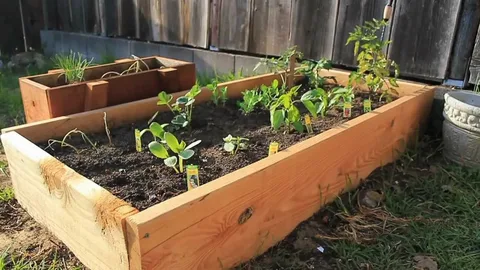Introduction
Embarking on the journey of gardening is rewarding, and for beginners, a raised garden bed is an excellent starting point. In this guide, we’ll explore the step-by-step process of building and cultivating a raised garden bed, making it accessible and enjoyable for those new to gardening.
Planning Your Raised Garden Bed
Before you dig into the soil, take the time to plan your raised garden bed. Choose a sunny location, as most plants thrive with ample sunlight. Determine the size and height of your bed, keeping in mind the accessibility for maintenance.
Selecting the Materials
The materials you choose for your raised bed matter. For beginners, cost-effective and durable options include cedar or treated lumber. Consider the longevity of the material and its resistance to decay.
Preparing the Site
Prepare the site by clearing away debris and leveling the ground. A stable foundation ensures the longevity of your raised bed. Take the time to clear the area thoroughly and create a clean slate for your garden.
Building the Frame
Constructing the frame is a straightforward process. Follow a step-by-step guide, connecting the corners securely. This stage sets the foundation for your garden bed, and precision ensures stability.
Filling the Bed with Soil
Choosing the right soil mix is crucial for the success of your raised bed. Opt for a well-balanced mix that includes organic matter and essential nutrients. This provides an ideal environment for plant growth.
Planting in Your Raised Garden Bed
For beginners, selecting easy-to-grow plants is key. Follow recommended spacing guidelines and arrange your plants thoughtfully. Consider the growth habits of each plant for a harmonious garden.
Watering and Mulching
Maintain your raised bed by adopting proper watering practices. Mulching helps retain moisture and suppress weeds. It’s a simple yet effective step in ensuring the health of your plants.
Maintaining Your Raised Garden Bed
Regular maintenance includes weeding, pest control, and soil amendments. Keep an eye on the health of your plants and address any issues promptly. A well-maintained garden bed yields a bountiful harvest.
Benefits of Raised Garden Beds
Raised beds offer improved drainage, aeration, and accessibility. They also extend the growing season, allowing for earlier planting and later harvesting. These benefits make raised beds an excellent choice for beginners.
Troubleshooting Common Issues
Be prepared to troubleshoot common issues like overwatering or poor drainage. Learn how to identify and address potential pest problems promptly to maintain a thriving garden.
Customizing Your Garden Bed
Personalize your garden bed by adding trellises or supports for climbing plants. Consider artistic touches or unique features to make your garden a reflection of your personality.
Harvesting Your First Crop
The joy of harvesting your first crop from a garden you’ve nurtured is unparalleled. Follow proper harvesting techniques and savor the satisfaction of enjoying your homegrown produce.
Sharing the Experience
Encourage others to start their raised beds and share the gardening experience. Join community gardening initiatives or educational programs to enrich your gardening journey.
Conclusion
Building a raised garden bed for beginners is not just about cultivating plants; it’s about cultivating a connection with nature and the food you eat. As you witness the fruits of your labor, you’ll discover the joy and fulfillment that gardening brings.
